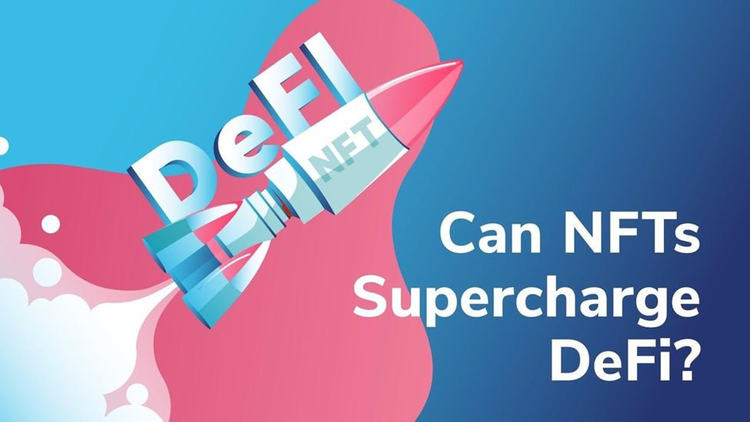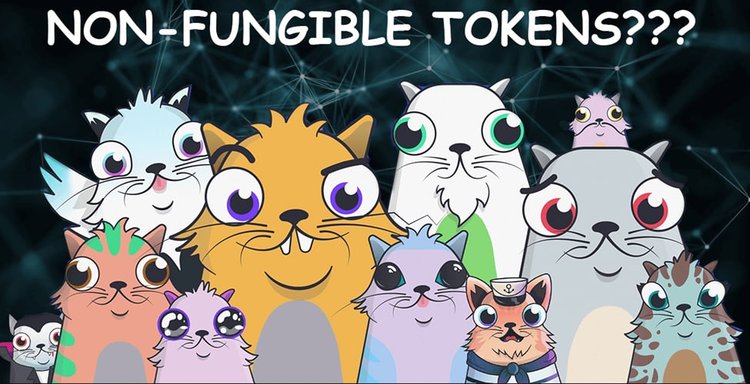Those in the decentralized finance (DeFi) world continually look for the ‘next big thing.’ Non-fungible tokens (NFTs) seem to fit the bill.
NFT critics claimed in 2020 the asset class would struggle to stimulate real-world volume and lack proper liquidity (since most NFT buyers purchase and hold) to attract the attention of supporters with enough clout to propel the industry forward.
These concerns now look unfounded. Shark Tank celebrity Mark Cuban sold a NFT version of a Tweet for $952 via the Valuables platform. Cuban also released his own "The RollUp 2021" NFT in late January.
Check out this #NFT for sale on Mintable! Pick up 'The UnderDog Has Spoken' before its swooped up! https://t.co/Z6RwYzvr9U #NFTs #CryptoArt #blockchain
— Mark Cuban (@mcuban) February 20, 2021
As of mid-February, the weekly NFT market stood around $8.2 million - solid standing for an industry with vast potential as a new frontier for blockchain technology.
What Are NFTs And Why Are They Important?
NFTs are digital assets representing a wide range of tangible and intangible assets, including virtual real estate, novelties and collectibles, alongside physical-world items like sports cards.
No two NFTs are identical. Each creation maintains a unique collectible appeal and is unable to be faked. Fraudulent NFTs could easily be traced to the original issuer, making NFTs an appealing tool to digitally secure valuable assets.
NFTs are also non-interoperable, indivisible, indestructible and even allow some digital game players to create and interact in virtual worlds (like Decentraland). Many NFT tokens are built on the Ethereum ERC-721 and ERC-1155 standards, allowing developers to ensure virtual creations can interact with well-used protocols like MetaMask and MyEtherWallet.
However, the popularity of NFTs has led other blockchain platforms to create and issue their own without relying on Ethereum. Metaverse users can interact with MITs (Metaverse Identifiable Tokens) to register off-chain assets, like artwork or sports cards with a uniquely identifiable ID. Metaverse’s secure ledger system is built on a hybrid PoW and PoS consensus algorithm. Users can build and deploy smart contracts to the Metaverse chain with tools like MetaMask, Remix, and Truffle - without rewriting or reconfiguring contracts. Those on Metaverse can also utilize the Metaverse Smart Token (MST) to create digital assets in conjunction with the MIT (for non-fungible items), or rely on the protocol’s Avatar system to build a secure digital identity and collect credit by interacting with other profiles or assets.
Visitors to the Sandbox marketplace can buy user-generated 3D voxel assets with the protocol’s SAND token and monetize online gaming. Last year, Hashed, a global, early-stage venture fund focused on blockchain and crypto, invested in Sandbox due to foreseeing blockchain gaming’s potential when "a strong incentive scheme is combined with the User Generated Content(UGC)."
Many believe NFTs could completely revolutionize the online gaming world. Hopes are they could help players "capture the utility and value of in-game purchases and asset acquisitions more effectively," instead of "perpetuating a one-way system where game developers primarily benefit as people spend money to unlock specific assets."
Blockchain-enabled games primarily focus on helping players generate value. This ethos fosters future game development, as NFTs could be designed to retain value far beyond their genesis. A user will always have ownership of an item purchased on a gaming platform, with an NFT.
In late December 2020, TRON launched its new TRC-721 NFT standard to allow applications to both track and transfer NFTs on TRON. Developers claim TRON’s public chain infrastructure will facilitate a faster process to apply TRC-721 to products and applications.
Upending Traditional Industries and Empowering Creators
The scarce nature of NFTs has been a boon for creators in high-value industries like the art world. NFTs have greatly expedited the democratization of art access, especially as the COVID-19 pandemic closed many art galleries, exhibits, and studios.
With NFTs, artists have been able to sell digital forms of their work directly to global audiences without shelling out large fees or commissions to auction houses and studios. Aside from permitting creators to immediately keep a large percentage of profit after a sale, some digital artworks have been programmed to automatically pay the creator a royalty every time the piece is bought and re-sold.
Artists have reported the ability to immediately tokenize a work and have it be seen by a global audience helps adapt their style and technique to the desires and interests of those in the digital age.
The NFT Renaissance Only Looks to Continue
The world of buying and selling NFTs continues to grow as more people realize the potential investment opportunity a digital asset - even as simple as a CryptoKitty - could be worth in the future.
Hopes are NFTs could eventually serve as loan collateral across DeFi platforms, opening up an immense financial opportunity for many people.



